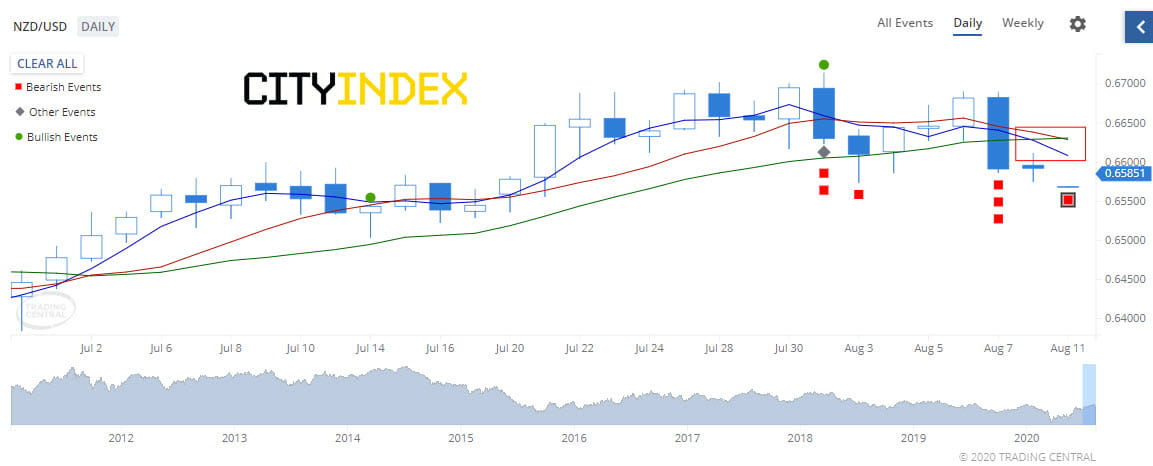The US Dollar was under pressure against all of its major pairs on Wednesday except for the GBP and JPY. On the U.S. economic data front, U.S. consumer prices rose 0.6% in July on month, above the 0.3% estimate following a 0.6% increase in June. Excluding food and fuel costs, core CPI also rose 0.6% from the prior month making it the largest gain since 1991. Finally, the July budget deficit narrowed to $63 billion from $119.7 billion a year ago.
On Thursday, jobless claims for the week ended Aug 8th are likely to come in at 1150K, down from 1186K in the prior week. Import prices are expected to continue to increase with a slight gain of 0.6% on month in July from a gain of 1.4% in June.
The Euro was higher against all of its major pairs except for the CHF. In Europe, the European Commission has reported June industrial production at +9.1% (vs +10.0% on month expected). The U.K. Office for National Statistics has posted 2Q GDP at -20.4% on quarter (vs -20.5% expected), June industrial production at +9.3 (vs +9.2% on month expected), manufacturing production at +11.0% (vs +10.0% on month expected) and trade balance at 5.3 billion pounds surplus (vs 2.6 billion pounds surplus expected).
The Australian dollar was mixed against all of its major pairs.
The Reserve Bank of New Zealand kept its key interest rate at 0.25%, which was widely expected by economists. The RBNZ is also expanding its large scale asset purchase program by up to $100 billion NZD.
Using the "technical Insight" research tool under the Market Analysis tab, our automated pattern recognition software has identified a bearish signal in the NZD/USD.
A triple moving average crossover (4-day, 9-day, 18 day)

Source: GAIN Capital, "Technical Insight"
This tells us the currency pair is generally in an established trend (bullish or bearish) for the time horizon represented by the moving average periods.
Moving averages are used to smooth out the volatility or "noise" in the price series, to make it easier to discover the underlying trend. By plotting the average price over the last several bars, the line is less "jerky" than plotting the actual prices. In the triple crossover method, a bullish signal is generated when a faster moving average (4 bar) crosses above an intermediate moving average (9 bar), which in turn crosses above a slower moving average (18 bar). In this state, the price is likely in an established uptrend. The opposite is true when the 4 bar crosses below the 9 bar which in turn crosses below the 18 bar, triggering a bearish event like in this case.
Happy Trading
On Thursday, jobless claims for the week ended Aug 8th are likely to come in at 1150K, down from 1186K in the prior week. Import prices are expected to continue to increase with a slight gain of 0.6% on month in July from a gain of 1.4% in June.
The Euro was higher against all of its major pairs except for the CHF. In Europe, the European Commission has reported June industrial production at +9.1% (vs +10.0% on month expected). The U.K. Office for National Statistics has posted 2Q GDP at -20.4% on quarter (vs -20.5% expected), June industrial production at +9.3 (vs +9.2% on month expected), manufacturing production at +11.0% (vs +10.0% on month expected) and trade balance at 5.3 billion pounds surplus (vs 2.6 billion pounds surplus expected).
The Australian dollar was mixed against all of its major pairs.
The Reserve Bank of New Zealand kept its key interest rate at 0.25%, which was widely expected by economists. The RBNZ is also expanding its large scale asset purchase program by up to $100 billion NZD.
Using the "technical Insight" research tool under the Market Analysis tab, our automated pattern recognition software has identified a bearish signal in the NZD/USD.
A triple moving average crossover (4-day, 9-day, 18 day)

Source: GAIN Capital, "Technical Insight"
This tells us the currency pair is generally in an established trend (bullish or bearish) for the time horizon represented by the moving average periods.
Moving averages are used to smooth out the volatility or "noise" in the price series, to make it easier to discover the underlying trend. By plotting the average price over the last several bars, the line is less "jerky" than plotting the actual prices. In the triple crossover method, a bullish signal is generated when a faster moving average (4 bar) crosses above an intermediate moving average (9 bar), which in turn crosses above a slower moving average (18 bar). In this state, the price is likely in an established uptrend. The opposite is true when the 4 bar crosses below the 9 bar which in turn crosses below the 18 bar, triggering a bearish event like in this case.
Happy Trading
Latest market news
April 25, 2024 03:09 PM
April 25, 2024 03:00 PM
April 25, 2024 01:12 PM
April 25, 2024 11:14 AM




